THE HISTORY OF GUERRILLA WARFARE IN COLOMBIA
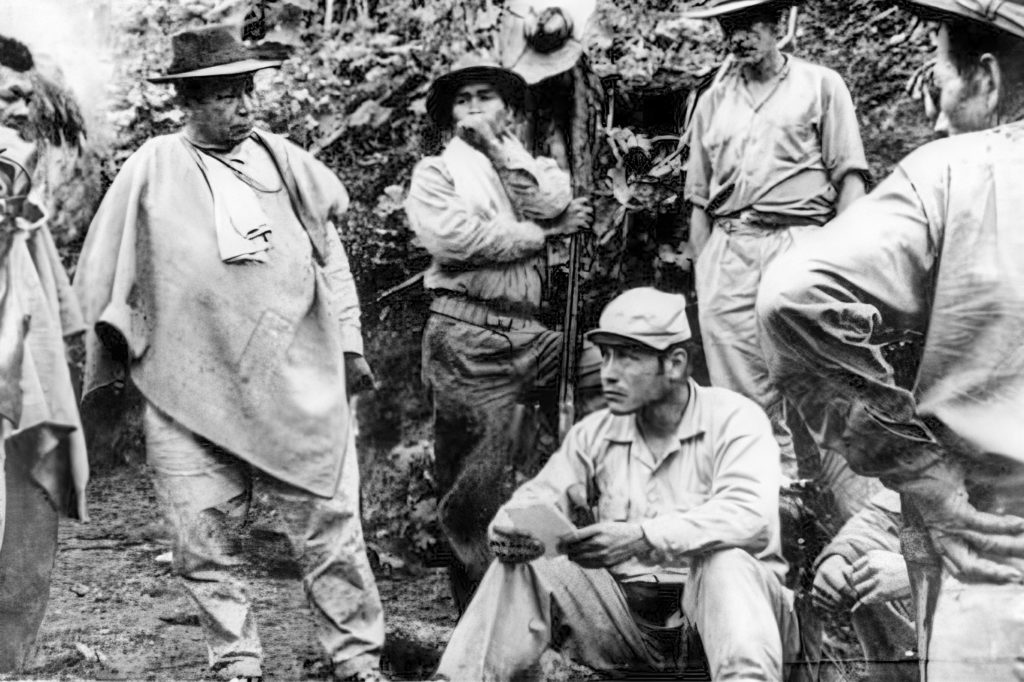
PREFACE
The history of Colombia is that of a country trapped in a seemingly endless cycle of violence. Behind the clichés of drug trafficking and guerrilla movements lies a much more complex reality: that of a people torn apart by decades of war, repression, and injustice. This dossier aims not only to recount the facts but also to understand the deep mechanisms that have shaped the Colombian conflict and its lasting consequences.
I have written this dossier with the goal of providing a clear and accessible vision of the history of guerrilla warfare in Colombia, to better understand Colombian society and the origins of its armed conflicts. This is not an exhaustive work, as the subject is vast and would require even more in-depth analysis. However, I have chosen to make it practical and instructive so that it can be read and understood by a broad audience.
If you are interested in Colombia, whether for historical, geopolitical reasons, or because you plan to visit, I hope this work provides you with essential insights. Feel free to share your thoughts, as history is alive, and analysis constantly evolves.
Why has the war lasted so long? Who are the real actors? What interests are hidden behind official narratives? And above all, can Colombia truly aspire to peace?
Through this investigative work, I deconstruct myths, expose responsibilities, and analyze future challenges. Peace is not merely a signature on paper; it is a complex process hindered by those who stand to lose the most from a paradigm shift.
This dossier is intended for those who refuse the simplified and caricatured version presented by traditional media. It is a call for reflection, a testimony to the resilience of a people, and a denunciation of the dark forces that perpetuate violence.
The history of Colombia is not just a national issue; it is a mirror of power struggles and interest games that transcend borders.
Gabriel Schwarb
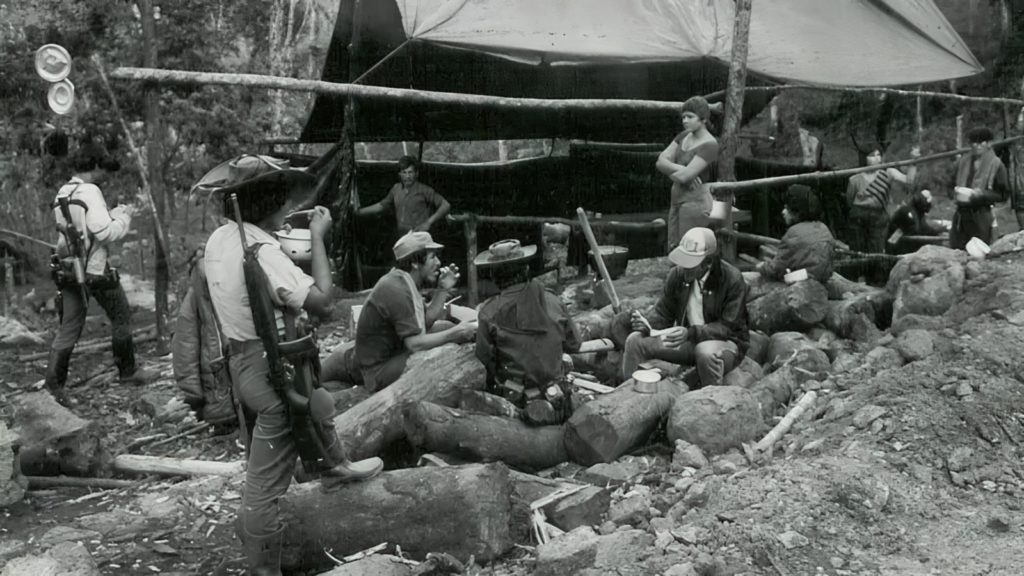
1. General Introduction Colombia has been marked by a civil war lasting over six decades, involving various actors:
- The guerrilla groups, armed movements born from social and peasant struggles.
- The Colombian state, often supported by foreign powers, particularly the United States.
- The paramilitaries, private militias defending the interests of major corporations and elites.
- Multinational corporations, especially those exploiting the country’s natural resources.
- Drug traffickers, whose involvement in the conflict has altered the nature of the war.
Debunking clichés about Colombia When discussing Colombia, certain stereotypes persist in the collective imagination:
- A country reduced to drugs and cartels: While cocaine production has indeed shaped the country’s history, Colombia is above all a nation of extreme political and social complexity.
- A territory dominated by violence: Violence in Colombia is not limited to warring cartels. It stems from agrarian conflicts, economic injustices, and foreign interference.
- A weak state facing criminal organizations: The state apparatus has played a central role in perpetuating the conflict, notably through militarization and collusion with violent actors.
- A society on the fringes of modernity: Colombia has an engaged intellectual class, a rich culture, and economic dynamism that contrast with its image as a country in perpetual war.
The Colombian conflict cannot be understood without revisiting its historical and economic origins. The country’s history is marked by deep social inequalities, excessive land concentration, and brutal repression of popular movements.
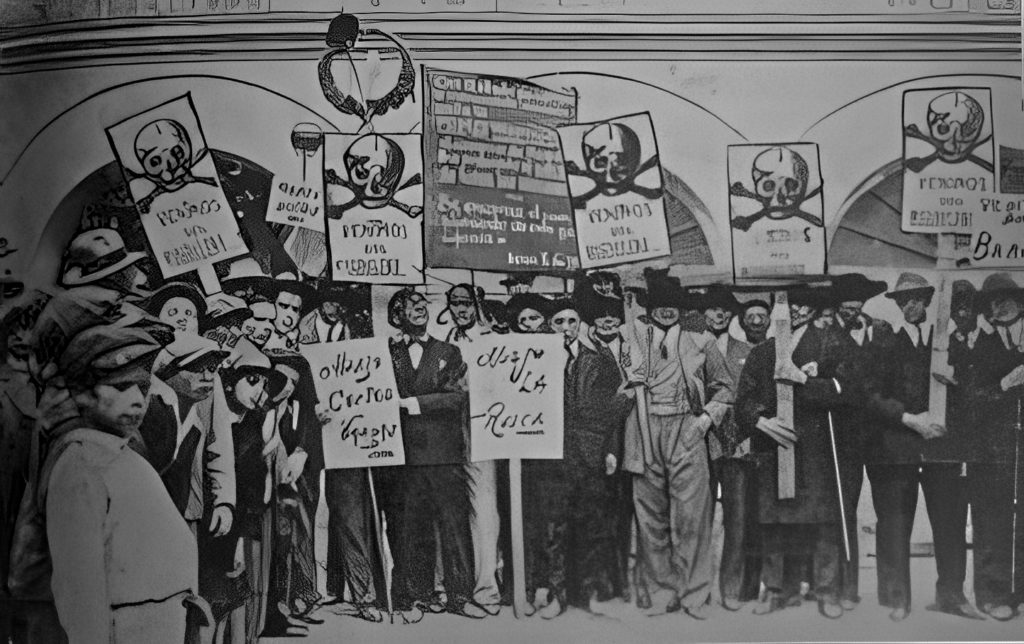
2. The Banana Massacre: The Origins of the Uprising
The Working Conditions Under the United Fruit Company
In the 1920s, the United Fruit Company (now Chiquita Brands International) exercised total control over banana production in Colombia. The company imposed inhumane working conditions on labourers: endless working hours, the absence of fixed wages, precarious housing, and the obligation to spend their meagre earnings in company-owned stores. This quasi-feudal system generated deep resentment among workers.
The 1928 Strike and Workers’ Demands
In response to these injustices, plantation workers of the United Fruit Company organised a massive strike in December 1928. Their demands included fair wages, recognition of their trade union rights, and improved working conditions. This mobilisation was unprecedented in Colombia, as it highlighted the systematic exploitation of workers by a foreign corporation that enjoyed the support of the conservative government of the time.
Military Intervention and the Role of the United States
The strike grew to such an extent that the Colombian government, under pressure from the United States, decided to intervene brutally to crush the movement. Washington threatened to deploy the Marines to protect the interests of the United Fruit Company if the Colombian authorities failed to suppress the unrest.
On 6 December 1928, in the main square of Ciénaga, the Colombian army opened fire on a crowd of peaceful protesters. The exact number of victims remains uncertain: official sources report 47 deaths, while eyewitness accounts and historians estimate that the real toll could be in the hundreds or even thousands. Bodies were transported by train and dumped in mass graves to erase evidence of the massacre.
The Impact of the Massacre on Colombia’s Social Struggle
The Banana Massacre left a profound mark on the country’s history. It fuelled popular anger against the oligarchy and foreign interference. Among those inspired by this event in their political struggle was Jorge Eliécer Gaitán, a future leader of the Liberal Party, who would vehemently denounce Colombia’s subservience to foreign interests.
This massacre also found its place in literature, immortalised by Gabriel García Márquez in his novel One Hundred Years of Solitude, where he depicted state violence and the manipulation of official history.
Total Impunity and a Precedent for Future Repression
No sanctions were ever imposed on those responsible for the massacre. The event became a symbol of the collusion between the state, multinational corporations, and the military— a model that would be replicated throughout the 20th century in other violent crackdowns against social and peasant movements.
The Banana Massacre remains a cornerstone in understanding political radicalisation in Colombia and the rise of revolutionary movements that would emerge decades later.
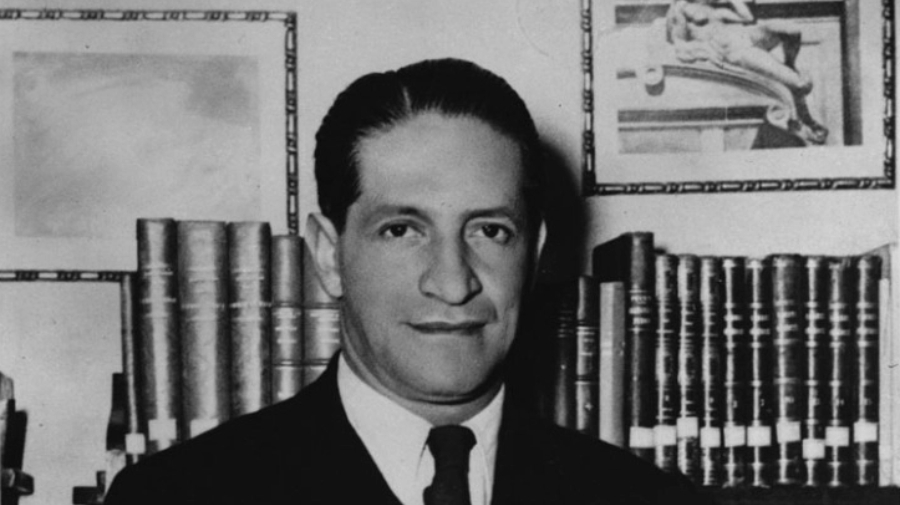
3. El Bogotazo and the Assassination of Jorge Eliécer Gaitán
Who Was Jorge Eliécer Gaitán?
Jorge Eliécer Gaitán was a charismatic political leader of the Colombian Liberal Party, a staunch defender of the working class, and a fierce opponent of the conservative elites. His discourse was centred on social justice, land redistribution, and the end of worker exploitation. He also denounced Colombia’s submission to foreign interests, particularly those of the United States. His growing popularity made him the undisputed favourite for the 1950 presidential elections.
The Assassination and Its Consequences
On 9 April 1948, as he was leaving his office in Bogotá, Jorge Eliécer Gaitán was shot multiple times by a man named Juan Roa Sierra. His assassination immediately triggered a wave of anger and riots across the capital, an event that became known as El Bogotazo.
Enraged crowds took to the streets, looted government buildings, and attacked symbols of power. The city descended into chaos for several days, resulting in thousands of deaths and the destruction of large parts of Bogotá’s downtown. The military eventually intervened with force to repress the uprising.
The Role of El Bogotazo in Colombian History
Gaitán’s assassination was widely perceived as a political coup orchestrated by the elites to prevent a radical shift in favour of the working class. The event marked a turning point in Colombia’s history, plunging the country into a decade-long civil war known as La Violencia (1948–1958), in which Liberals and Conservatives fought each other in a bloodbath.
Fidel Castro: A Witness to El Bogotazo
A historical fact often overlooked is that Fidel Castro was present in Bogotá during El Bogotazo, attending a student congress. He witnessed the riots first-hand and was profoundly impacted by the brutality of the repression. This experience reinforced his conviction that only armed revolution could overthrow the oligarchies of Latin America.
The Influence of Gaitán and El Bogotazo on the Colombian Guerrilla Movement
The assassination of Gaitán and the ensuing violence led to the radicalisation of many activists. The brutal repression of the Liberal movement convinced many that achieving political change through democratic means was impossible, pushing them to join or create armed resistance movements.
El Bogotazo is thus considered one of the foundational events of Colombia’s armed conflict, directly influencing the rise of guerrilla groups in the following decades.
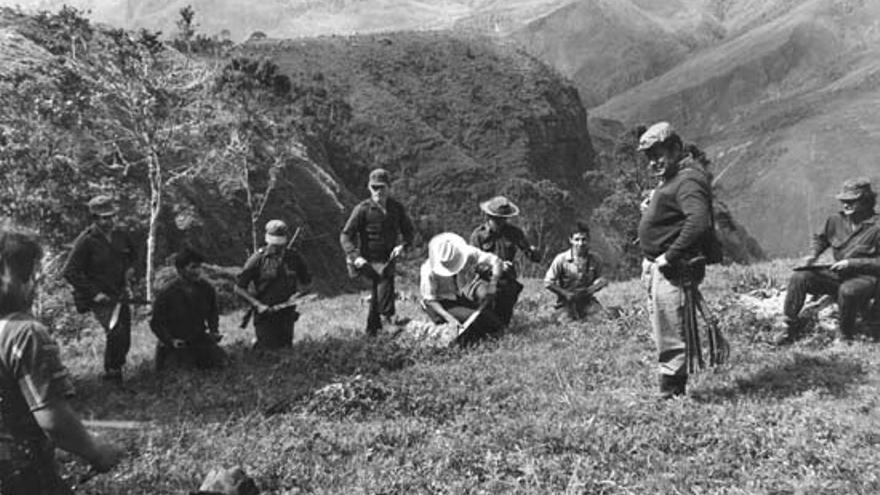
4. The Genesis of Guerrilla Groups
Political and Social Context
After El Bogotazo and the intensification of La Violencia (1948–1958), Colombia plunged into a brutal civil war between Conservatives and Liberals. This conflict, marked by widespread repression and massacres, led to the displacement of hundreds of thousands of rural inhabitants. However, this was only the prelude to an even longer and more structured conflict: the birth of Marxist guerrilla groups.
The Creation of the FARC
The Revolutionary Armed Forces of Colombia (FARC) officially emerged in 1964, led by Manuel Marulanda (Tirofijo). The group originated from Liberal peasant militias persecuted by the army, which radicalised under the influence of Marxism-Leninism. The FARC advocated agrarian reform, seeking to redistribute land and challenge the dominance of Colombia’s elites.
From its inception, the FARC operated as a popular army employing guerrilla warfare tactics. Their doctrine relied on territorial control, surprise attacks against the army, and using local resources for survival.
The ELN: A Cuban-Inspired Movement
In the same period, 1964, another group emerged: the National Liberation Army (ELN). Inspired by the Cuban Revolution and Che Guevara’s guerrilla model, the ELN was formed by intellectuals and students influenced by Liberation Theology and leftist ideology.
Unlike the FARC, the ELN had a more ideological and religious foundation and established a strong presence in oil-producing regions, targeting multinational corporations and state-owned enterprises as part of their revolutionary struggle.
M-19: An Urban Guerrilla Movement
In the 1970s, a new type of guerrilla movement emerged: the April 19 Movement (M-19). Unlike the FARC and ELN, which were primarily rural insurgencies, the M-19 focused on urban warfare. It was formed in response to electoral fraud in the 1970 presidential elections, where former dictator Gustavo Rojas Pinilla was allegedly deprived of victory.
The M-19 became famous for its spectacular operations, such as:
• The theft of Simón Bolívar’s sword from a museum as a symbolic act of rebellion.
• The siege of the Dominican Embassy in 1980, where they took diplomats hostage.
• The assault on the Palace of Justice in 1985, one of the most dramatic events in Colombian history, ending in a massacre when the army responded with overwhelming force.
The Evolution of Guerrilla Groups and Their Impact
Over the decades, Colombian guerrilla movements became increasingly militarised and developed parallel economies to sustain their operations, particularly through kidnapping, extortion, and control of illicit drug trade.
While the FARC and ELN remained deeply rooted in Marxist ideology, the M-19 chose a different path. In 1990, the M-19 abandoned armed struggle and transitioned into a political party, successfully integrating into Colombia’s democratic system.
The birth and rise of guerrilla movements in Colombia were not merely reactions to social inequality but also responses to brutal state repression and foreign interference. The persistence of these armed groups reflects the state’s failure to address deep-rooted social grievances, fueling a conflict that continues to shape Colombia’s modern history.
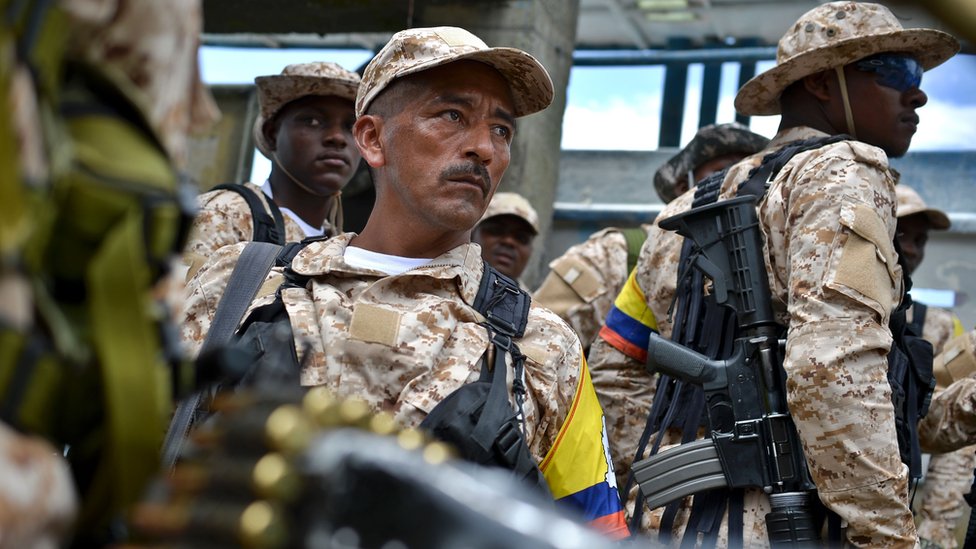
5. The Financing of Guerrilla Groups: Drug Trafficking, Kidnappings, and Extortion
The Early Sources of Funding: Contributions and Extortion
In their early decades, guerrilla groups like the FARC and ELN financed their activities primarily through voluntary contributions from sympathisers and by imposing a “revolutionary tax” on local populations and businesses operating in their controlled territories.
Over time, however, this form of funding evolved into systematic extortion, targeting:
• Farmers and landowners who had to pay for “protection.”
• Small and large businesses, including multinational corporations operating in rural areas.
• Coca growers, who were forced to pay taxes on their crops.
The Industrialisation of Kidnapping
By the 1980s, guerrilla groups increasingly turned to mass kidnappings as a way to fund their operations. This practice became an industry, generating millions of dollars annually.
• High-profile hostages included politicians, military officials, and business leaders, whose families were forced to pay exorbitant ransoms.
• Ordinary civilians were also kidnapped, with some being held captive for years.
• Foreigners, including journalists and aid workers, were prime targets, as their governments often paid to secure their release.
The widespread use of kidnapping tarnished the reputation of guerrilla groups both nationally and internationally. Public opinion shifted against them, as Colombians grew weary of the fear and insecurity generated by these tactics.
The Guerrillas’ Involvement in Drug Trafficking
Initially, guerrilla groups opposed drug trafficking on ideological grounds. However, as the cocaine trade expanded in the 1990s, the FARC and ELN increasingly became involved in this lucrative business.
• Phase 1: Taxing coca production – Guerrillas imposed taxes on coca farmers and levied fees on drug cartels for using their territories.
• Phase 2: Overseeing production – The groups later began directly managing the production of coca paste and coordinating its sale to cartels.
• Phase 3: Full integration into the drug trade – Some factions of the FARC went beyond taxation, establishing their own trafficking networks and becoming direct players in the global drug trade.
While the ELN remained less involved in drug trafficking than the FARC, some of its units still profited from coca cultivation taxes in areas under their control.
The Turn of the 2000s: A Drug-Funded War
By the 2000s, drug money had become the primary financial engine of guerrilla groups, allowing them to:
• Expand their military capabilities, acquiring sophisticated weapons and technology.
• Increase recruitment and retain fighters, offering salaries to combatants.
• Extend territorial control, competing with cartels and paramilitary groups.
The drug trade transformed the nature of the Colombian conflict, making peace negotiations more difficult, as guerrilla factions became financially dependent on illicit activities.
The M-19 Exception
Unlike the FARC and ELN, the M-19 never became heavily involved in drug trafficking. Instead, they relied on robberies, political extortion, and high-profile kidnappings for financial support.
This allowed them to maintain a cleaner public image, facilitating their eventual transition to political participation in the 1990s peace process.
Consequences and International Perception
• The involvement of guerrillas in drug trafficking allowed the Colombian government and the United States to label them “narco-terrorists”, justifying stronger military intervention.
• The international community withdrew support from the guerrilla movements, as they were no longer seen as political revolutionaries but as criminal organisations.
• Internal divisions emerged within the guerrilla ranks, as some members rejected drug involvement, while others embraced the enormous profits.
The financial evolution of guerrilla groups, from ideologically driven revolutionaries to drug-funded insurgents, further complicated the Colombian conflict and entangled it with global organised crime networks.
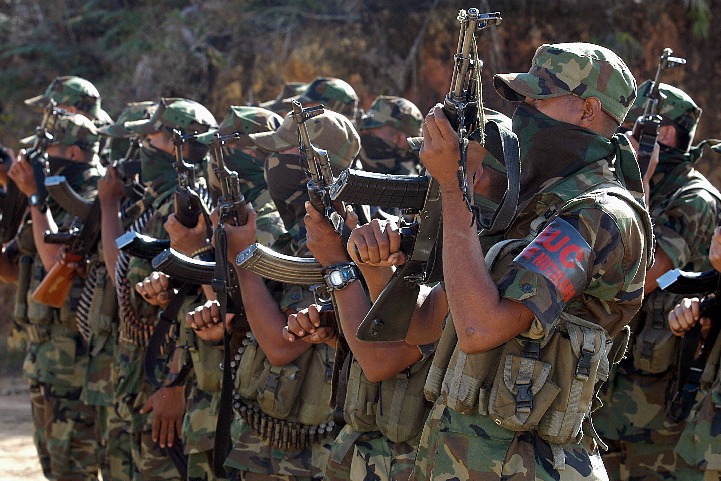
6. The State’s Response and U.S. Intervention
The Militarisation of the Conflict and the Rise of State Power
As guerrilla groups expanded their influence in the 1980s and 1990s, the Colombian state responded with increased militarisation and repression. The army launched large-scale counterinsurgency operations, leading to an escalation in violence.
• Special forces were created and trained for jungle warfare, specifically to combat guerrilla movements.
• Bounties and rewards were offered for the capture or killing of guerrilla leaders.
• Covert cooperation between the state and paramilitary groups was established, despite official denials.
This shift in strategy intensified the war, leading to massacres, human rights violations, and widespread displacement of civilians.
The Role of Paramilitaries
By the 1990s, right-wing paramilitary groups known as the Autodefensas Unidas de Colombia (AUC) emerged as powerful actors in the conflict. Financed by landowners, drug cartels, and corporations, these militias were created to:
• Eliminate guerrilla influence in rural areas.
• Protect the economic interests of elites by violently suppressing unions, activists, and indigenous groups.
• Terrorise communities suspected of supporting guerrillas.
The AUC became notorious for brutal massacres, forced disappearances, and extrajudicial executions. Despite their violent methods, they received tacit support from the military, benefiting from intelligence sharing and logistical coordination.
Plan Colombia: U.S. Military Intervention
In 2000, the United States launched Plan Colombia, a multibillion-dollar military aid programme aimed at:
1. Weakening guerrilla groups through military offensives.
2. Combating drug trafficking by destroying coca crops and targeting cartels.
3. Strengthening the Colombian state with training, weapons, and intelligence support.
• Over $10 billion in U.S. aid was channelled into Colombia’s military and police forces.
• Aerial fumigation campaigns were launched to eradicate coca crops, but they also destroyed food supplies and displaced thousands of farmers.
• U.S. military advisors played a direct role in shaping Colombia’s counterinsurgency strategy.
The Unintended Consequences of Plan Colombia
While Plan Colombia weakened guerrilla groups, it also had serious collateral damage:
• Mass displacement: Thousands of civilians lost their homes and livelihoods.
• Worsening human rights abuses: The Colombian military was accused of extrajudicial killings, including the “false positives” scandal, where innocent civilians were executed and falsely reported as guerrilla combatants.
• Empowerment of paramilitaries: As guerrillas were pushed back, paramilitary groups took over territories, expanding their control of illegal economies.
The Legacy of Plan Colombia and Uribe’s Counterinsurgency Policies
Under President Álvaro Uribe (2002-2010), Colombia adopted an aggressive military doctrine, further intensifying the conflict:
• The “Democratic Security Policy” expanded military operations across the country.
• Extrajudicial killings became a systemic problem, with thousands of innocent civilians murdered and dressed as guerrillas to boost body counts.
• State propaganda vilified the guerrillas, justifying extreme measures against them.
Consequences and Controversies
While the FARC suffered territorial losses, the broader cycle of violence remained:
• Paramilitary successor groups filled the void left by the guerrillas.
• Human rights abuses by the military damaged Colombia’s international reputation.
• The U.S. influence on Colombian politics raised concerns of neocolonialism and foreign intervention.
The state’s response to guerrilla groups was not just a fight against insurgency, but a war strategy intertwined with economic interests, paramilitary collusion, and external geopolitical pressures.
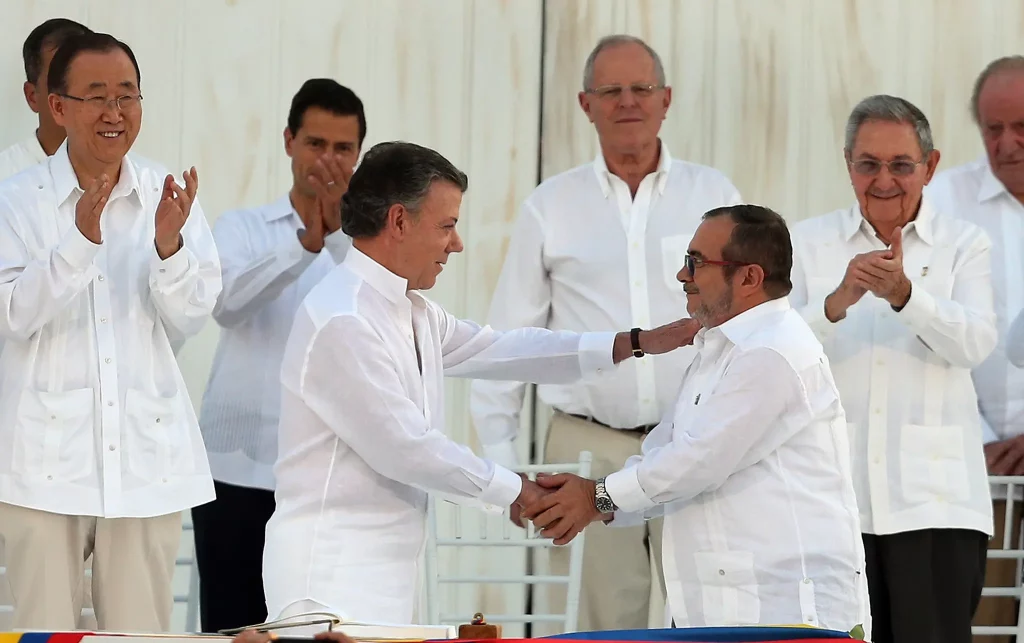
7. Attempts at Peace and Agreements with Guerrilla Groups
Early Negotiations and Failures
Since the 1980s, multiple peace negotiations have been attempted between the Colombian state and guerrilla groups. However, these efforts often failed due to:
• Lack of trust between the government and the guerrillas.
• Opposition from political elites who feared losing power.
• Continuous military offensives that disrupted talks.
The 1984 Ceasefire and the Unión Patriótica Genocide
In 1984, President Belisario Betancur brokered a ceasefire with the FARC, leading to the formation of the Unión Patriótica (UP), a political party meant to integrate guerrilla members into legal politics. However, this ended in tragedy:
• Over 5,000 UP members were assassinated by paramilitary forces, government-linked death squads, and drug cartels.
• The extermination of the UP destroyed trust in the peace process and pushed the FARC back into armed struggle.
The M-19 Peace Agreement (1990)
In 1990, the M-19 guerrilla group successfully negotiated a peace deal, leading to:
• Full demobilisation of its fighters.
• Integration into mainstream politics, resulting in electoral success.
Unlike the FARC and ELN, the M-19 opted for a political solution, demonstrating that peaceful transitions were possible, but only with security guarantees—something the UP never had.
The Pastrana Peace Process (1998-2002)
Under President Andrés Pastrana, a new peace dialogue was initiated with the FARC:
• A demilitarised zone the size of Switzerland was granted to the FARC to facilitate talks.
• The government aimed to end the conflict through political negotiations.
However, the FARC took advantage of the ceasefire to:
• Rearm and expand its military capabilities.
• Intensify kidnappings and extortions.
• Strengthen its control over drug trafficking.
By 2002, after years of stalled negotiations, talks collapsed, marking one of the biggest failures of peace diplomacy in Colombian history.
The 2016 Peace Agreement: A Historic Breakthrough
The most significant peace deal in Colombian history was signed in 2016 under President Juan Manuel Santos, ending over five decades of war with the FARC.
Key Provisions of the Agreement
• FARC fighters laid down their arms and transitioned into a legal political party.
• Land reforms were promised to address rural inequality.
• A Special Justice System (JEP) was created to prosecute war crimes.
• Reparations for victims and truth commissions were established.
However, the peace deal was highly controversial:
• Ex-President Álvaro Uribe led a campaign against it, arguing that it was too lenient on former guerrillas.
• In a 2016 referendum, 50.2% of voters rejected the agreement.
• Santos bypassed the referendum and ratified the deal through Congress, leading to deep political divisions.
Post-Peace Challenges and Ongoing Violence
Despite the agreement, violence did not end:
• Thousands of former FARC members were assassinated after demobilisation.
• Dissident FARC factions rejected the deal and resumed armed struggle.
• Drug cartels and paramilitary groups moved into territories previously controlled by the FARC.
Conclusion: A Fragile Peace
The 2016 peace agreement was a milestone, but true peace remains elusive. The failure to fully implement the accords, combined with new security threats, political opposition, and the persistence of armed groups, has left Colombia trapped in a cycle of instability.
The next step in Colombia’s history will depend on whether the government can deliver justice, security, and economic inclusion for former guerrillas and conflict-affected communities.
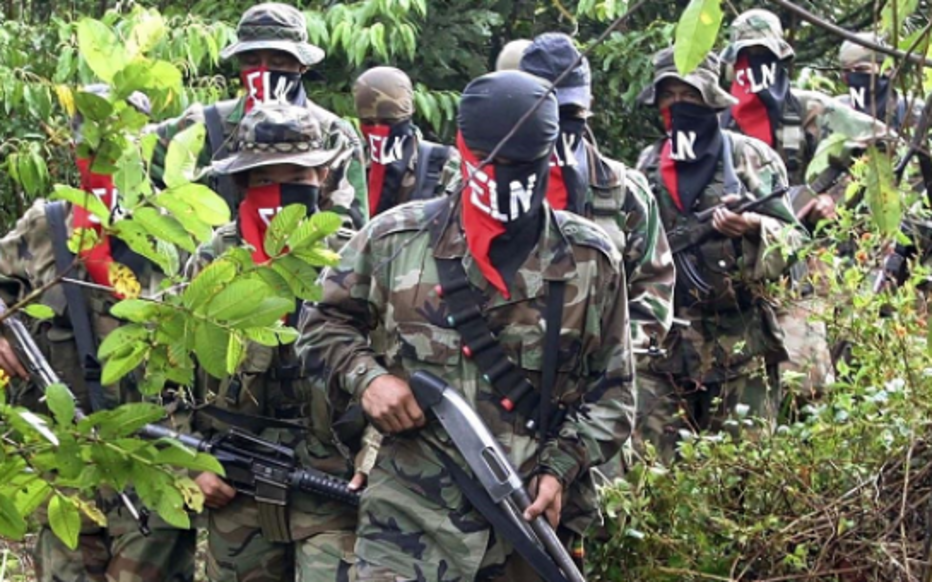
8. The Current Consequences of the Conflict and Challenges for Colombia
Despite the 2016 peace agreement, Colombia remains trapped in violence. The war may have “officially” ended, but new conflicts have emerged, and the deep social, economic, and political wounds remain open.
The Persistence of Violence Despite the Peace Agreement
Several factors explain why violence has not ceased:
1. FARC Dissidents and the Continuation of the Conflict
• Not all FARC members accepted the peace deal.
• Dissident groups rejected the agreement and returned to armed struggle.
• These groups continue to control territories, financed by drug trafficking, illegal mining, and extortion.
2. The ELN’s Ongoing Guerilla Warfare
• The ELN (National Liberation Army) never signed the peace deal.
• It remains one of the last active guerrilla groups, with a strong presence in border regions.
• The ELN has continued kidnappings, attacks, and extortion, making any new peace talks difficult.
3. The Rise of Paramilitaries and Drug Cartels
• The vacuum left by the demobilised FARC was quickly filled by criminal groups.
• Paramilitary successors and drug cartels moved into strategic territories previously controlled by guerrillas.
• The competition over coca production, illegal mining, and territorial control has led to new massacres and displacements.
The Systematic Assassination of Ex-FARC Guerrillas and Social Leaders
The Colombian government promised to protect ex-guerrillas and social leaders, but this has largely failed.
• Since 2016, more than 500 ex-FARC members have been assassinated.
• Over 1,400 social leaders (human rights defenders, indigenous leaders, environmental activists) have been murdered.
• Many of these killings are carried out by paramilitary groups, protecting the interests of landowners, multinational corporations, and drug cartels.
Corruption and Impunity
The Colombian state struggles to enforce peace due to corruption and deep-rooted political interests:
• The agrarian reform promised in the peace deal has not been fully implemented.
• The Special Jurisdiction for Peace (JEP) advances slowly, and many war criminals enjoy impunity.
• Drug money continues to influence politics, preventing deep reforms.
The Challenges for Gustavo Petro’s Government
In 2022, Gustavo Petro became Colombia’s first leftist president, raising hopes for a new approach to peace.
His government seeks “total peace”, aiming to:
1. Negotiate with the ELN and dissident FARC groups.
2. Reduce paramilitary and cartel influence through economic reforms.
3. Reform the security forces, historically linked to human rights abuses.
However, Petro faces enormous resistance:
• The right-wing opposition and economic elites oppose his reforms.
• The military and intelligence services resist changes that could reduce their power.
• The U.S. continues financing Colombia’s war on drugs, perpetuating conflict dynamics.
Colombia at a Crossroads: The Future of Peace
Colombia stands at a crucial moment in history:
• Either it achieves lasting peace through inclusive reforms and real security guarantees…
• Or it falls back into its cycle of violence, with paramilitaries, guerrillas, and drug cartels fighting for control.
The peace process is fragile, and without deep structural changes, Colombia risks remaining a country in perpetual conflict.
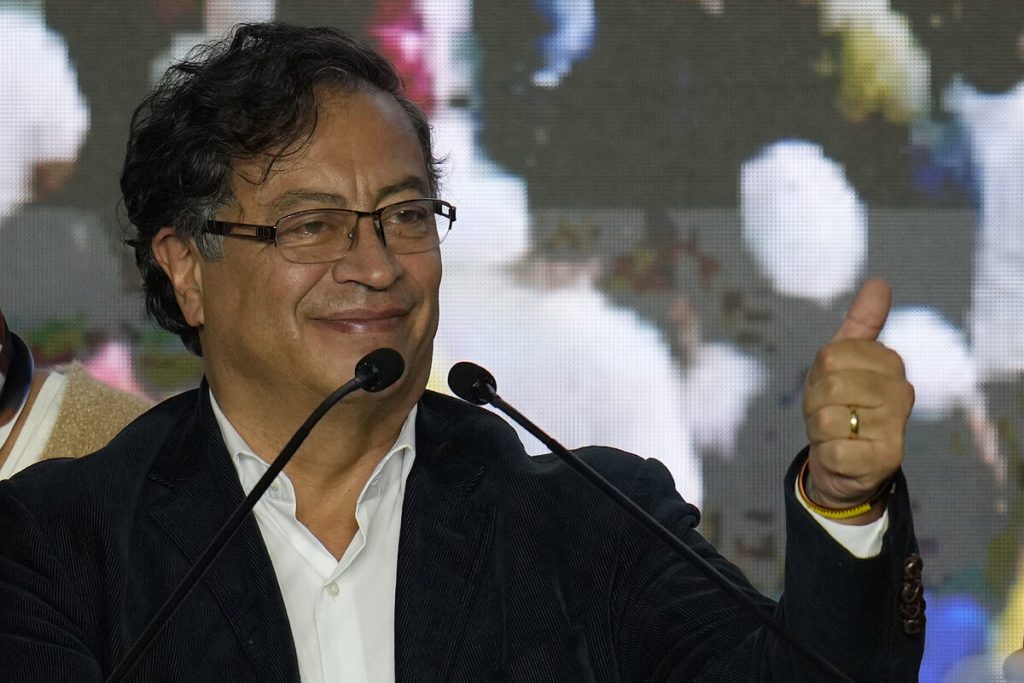
9. Conclusion and Future Perspectives
The 2016 peace agreement was meant to mark the end of Colombia’s armed conflict. Yet, reality on the ground tells a different story. Violence has not disappeared—it has transformed.
A Fragile Peace, Weakened by Opposition and Persistent Violence
Several factors threaten the peace process:
1. The Rising Influence of Armed Groups
• FARC dissidents, the ELN, and paramilitary successors continue to fight for territorial control.
• Drug cartels and illegal mining networks fuel violence, making peace implementation harder.
• New massacres, forced displacements, and assassinations of activists prove that Colombia is still at war.
2. The Political and Economic Elite’s Resistance to Change
• Right-wing parties and powerful economic groups view peace as a threat to their control.
• Landowners and multinationals resist agrarian reforms, fearing a loss of influence.
• Many former paramilitary allies remain in key government positions, undermining peace efforts.
3. The Stagnation of the Peace Agreement
• The state has failed to fully implement key points of the peace deal.
• Promises of land redistribution, rural investment, and political inclusion remain largely unfulfilled.
• Corruption, impunity, and lack of resources further delay progress.
The Challenge of Peace under Gustavo Petro
The election of Gustavo Petro in 2022, Colombia’s first left-wing president, raised hopes for a new era. His “Total Peace” policy aims to:
• Restart negotiations with the ELN and dissident groups
• Reform the military and reduce human rights violations
• Shift drug policy from militarization to economic alternatives
However, Petro faces enormous challenges:
• Political opposition seeks to block his initiatives
• Violent actors still dominate large territories
• U.S. pressure to continue the “War on Drugs” complicates reforms
Possible Scenarios for Colombia’s Future
• Successful Peace Process: If Petro’s government negotiates effectively and implements reforms, Colombia could achieve stability. However, this requires strong international support and cooperation from all sectors.
• Return to Militarization: If peace efforts fail, a future right-wing government may relaunch aggressive military operations, leading to new cycles of war and repression.
• A Perpetual State of Low-Intensity Conflict: The most likely scenario is a continued mix of negotiations, sporadic violence, and political instability, keeping Colombia in a fragile, unresolved peace.
A Peace Yet to Be Built
Colombia’s history shows that peace cannot be signed—it must be built.
• As long as social inequalities, land disputes, and corruption persist, violence will not end.
• If the political and economic elite refuse to support reforms, the country will remain divided.
• If the international community does not help guarantee security for former combatants and activists, the killings will continue.
Colombia now faces a critical choice:
• Embrace real transformation—reforming its economy, politics, and security forces.
• Fall back into old patterns—with new wars, new enemies, and new tragedies.
The future of Colombia is not yet written. But one thing is certain: peace is not just the absence of war—it is the presence of justice, inclusion, and opportunity.